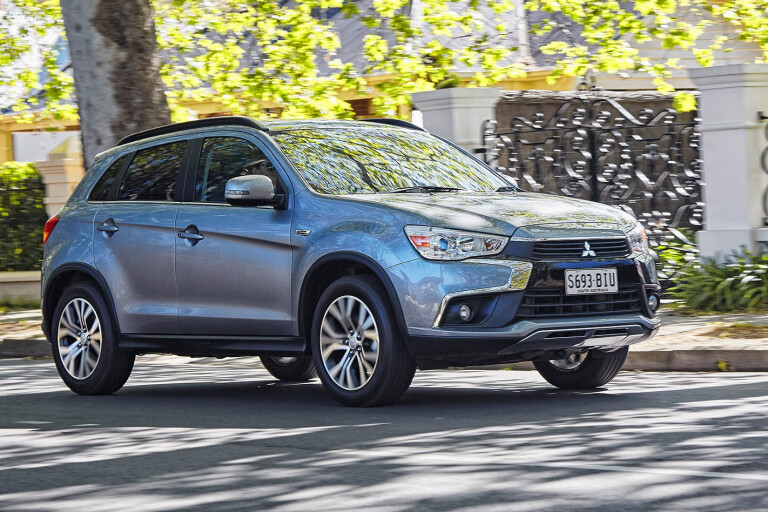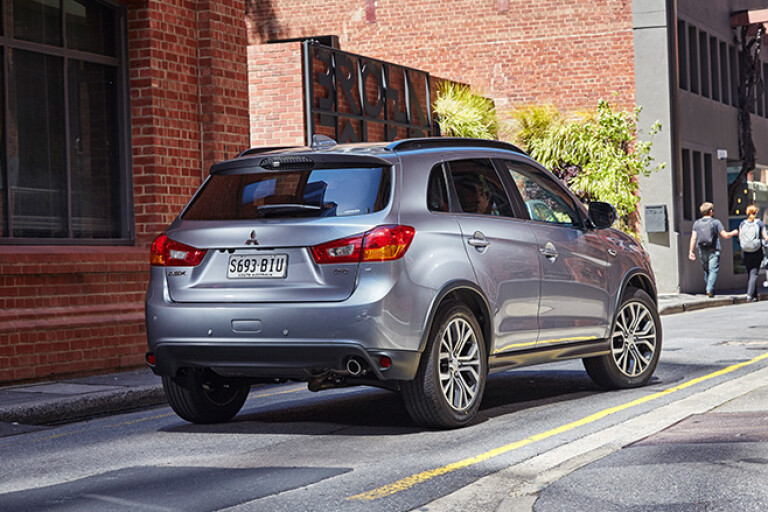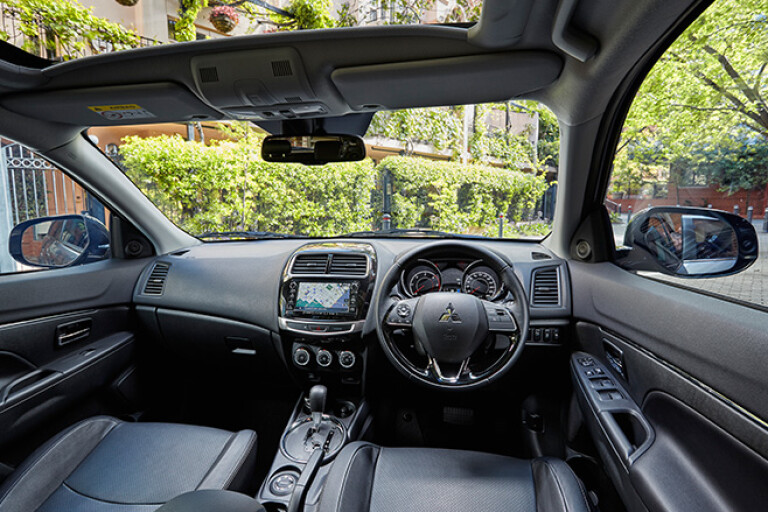
WHAT IS IT
In 2016, Aussies bought more than 18,000 ASXs, making it the second best-selling small SUV after the much younger and funkier Mazda CX-3. It’s no spring chicken, having launched right at the start of this decade, making it the oldest baby crossover by far.
Since its launch in the middle of 2010, the Mitsubishi ASX has been refined to help keep it competitive against much newer rivals. A new nose here, better quality trim there. Improved seating and switchgear, updated multimedia systems… that sort of thing. Yet the basic recipe has remained the same.
ON PAPER
There are two grades to choose from – LS and XLS – in either front-drive petrol or AWD turbo-diesel guises. Kicking things off is the LS petrol manual from $25,000. It uses Mitsubishi’s tried and trusted 2.0-litre four-cylinder petrol engine that has also powered the closely related Lancer and Outlander since the mid-2000s.
Producing 110kW of power and 197Nm of torque, it drives the front wheels via either a five-speed manual gearbox or – for $2000 more – a CVT auto. The luxury XLS starts at $31,500.

The 110kw/360Nm 2.20-litre four-pot turbo-diesel AWD LS from $32,500, meanwhile, uses a six-speed auto to drive all four wheels, yet it manages to be nearly 2.0L/100km more economical, averaging a commendable 6.0L/100km.
At the top of the ASX tree is the XLS AWD diesel from $32,500. That’s quite a spread of models to choose from. Note that – at 205mm – the ASX FWD petrol offers 25mm extra ground clearance than the AWD diesel.
FIRST IMPRESSIONS
Getting in, the first thing you notice is how spacious the cabin is compared to some smaller SUVs, with plenty of width, lots of headroom, and deep windows. You sit perched up high, affording a commanding view out.
The dash might seem a little dated and plasticky compared to the latest flashy cabins found in, say, the Suzuki Vitara, but the current ASX has a big central touchscreen multimedia system with the obligatory reverse camera. Plus, all the basics are right.
The driving position is comfortable, all the controls are easy to see and light to use, there’s excellent ventilation, and obviously Mitsubishi has thought about how these things get used – with heaps of storage places.
Finally, the boot is pretty competitive too, with 393L with the split/fold backrest up, or a sizeable 1475L with them folded flat.
PLUS AND MINUS
+ Packaging: For many people the size is just right between a small and medium SUV. The ASX sits in the Goldilocks zone. Neither too big nor too little.
+ Value: While it isn’t the cheapest in class, the ASX is good value with plenty of standard features. All models include seven airbags and stability/traction control, as well as a reversing camera, rear parking sensors, Bluetooth, climate control, rear-seat air vents, and 18-inch alloy wheels.
+ Space: There’s a sense of space inside, with a useable three-wide back seat (at a pinch).
+Height: You sit up high in the ASX, with a sense of control over the vehicle improving the driving experience.
+ Ease: Everything you need is within easy reach, and is a cinch to operate.
+ Versatility: The boot is reasonably large and practical for a small SUV, beating others like the Mazda CX-3.
+ Simplicity: Driving the ASX with its gutsy engines (that can become noisy but get on with the job) is designed to be as easy as possible with plenty of mid-range pick-up and steering that’s light but fairly accurate.

- Outdated: ASX has been around since Julia Gillard first became PM – so it’s an oldie alright. And in the increasingly chic compact crossover world, she ain’t no style statement either.
- Cabin: The interior design of ASX is definitely from another era, with hardy but low-rent plastics that look and feel cheap; and some of the multimedia controls are fiddly.
- Noise: There is heaps of noise coming from the engine by and the road. The engine is lusty but rowdy when revved, with the CVT causing the revs to flare at the first push of the pedal. It can become tiresome.
- Boom: With constant booming from the road and tyres, this isn’t a particularly quiet car at the best of times, and can be downright deafening at speed. Be prepared to speak up.
- Ride: On smooth roads, it’s OK, but bumps certainly make themselves felt. There just isn’t much suppleness or sophistication to the chassis’ firm set-up.
- Safety: If the ASX were tested today, it wouldn’t score the same five-star ANCAP rating that it did when introduced back in 2010, because it lacks driver-assist technology like the potentially life-saving AEB, not to mention collision warning, lane departure warning, adaptive cruise or lane keeping. In terms of tech, the ASX is stuck in the last decade.
VERDICT
With chunky styling, a roomy interior, high seating, easy controls, a long warranty and a wide choice of models, it is clear why the ASX sells in consistently high numbers. It really does fit the bill for folk who seek a durable, dependable, and undemanding experience.
But the Mitsubishi’s age is obvious inside, from the cheapo plastics and dated dash, to the ever-present noise, and at times hard ride, revealing a lack of sophistication compared to newer rivals like the CX-3, HR-V and Vitara.
Still, the ASX hits a sweet spot in the market, making it the Goldilocks – if not exactly the Golden Child – of the small SUV set.

COMMENTS